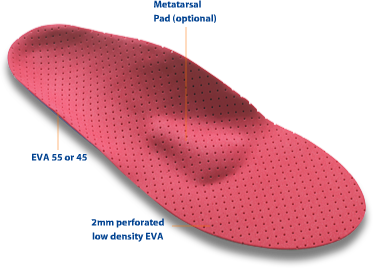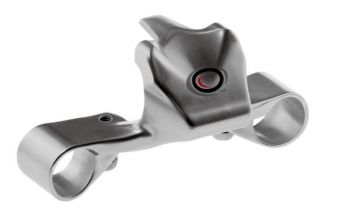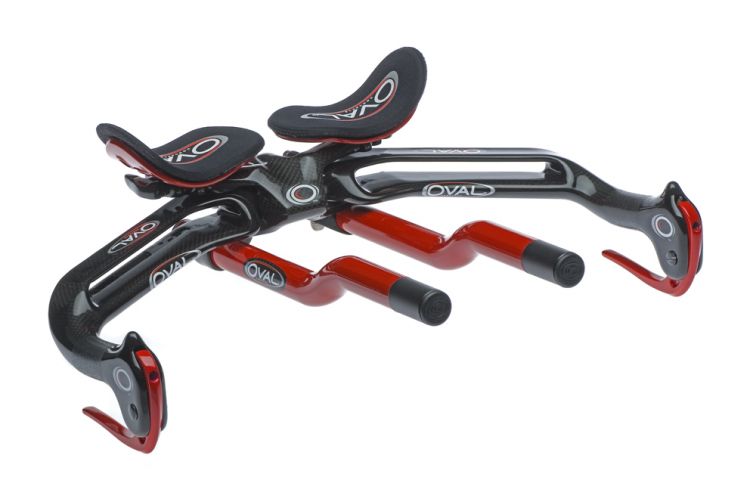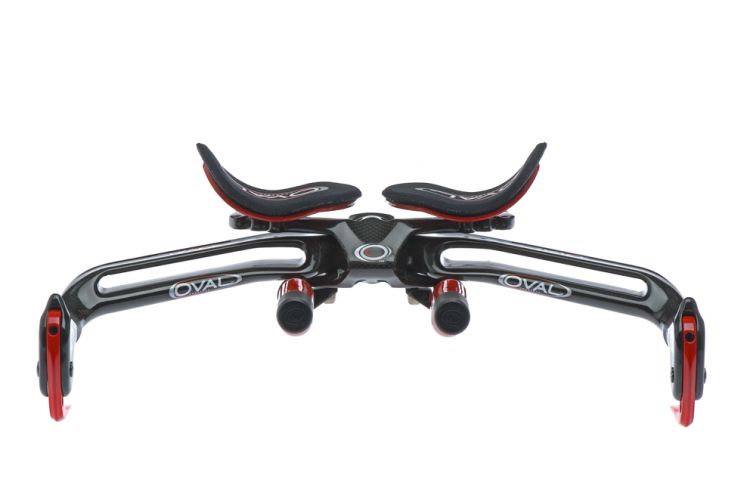Interbike 2007 Reviews: Part 1 – eSoles & Oval Concepts
With most of the new products already shown at Eurobike, I set out on the floor of the Sands Convention Center to find what I thought were things that were overlooked or underappreciated or just not glossy enough for the front pages.
eSoles
One of my first stops along these lines was the eSoles booth. I figured that every triathlete uses two pairs of insoles, whether they be the stock ones that came with your run or bike shoes, a custom orthotic, or an aftermarket stock insole like those made by Spenco or Superfeet. eSoles aims to deliver prescription-orthotic level correction and precision in insoles designed specifically for a certain sport without the need to go to a podiatrist or orthopedist. The basis of the system is a two-part scanning machine that first takes a simple scan of your foot on a pressure platform, and then uses an airpillow support system to cradle your foot while it is scanned. The air-pillow supports your foot in a non-weight bearing position that allows the foot to easily be scanned. The whole process takes about five minutes. It’s not yet at vending machine levels of convenience, as the pillow failed to put enough pressure under my foot the first time, requiring some extra input to get a proper scan on my foot. The scan is saved and uploaded to the internet, where it is viewable with a simple code on the eSoles website. They save the scan so you can easily get another pair made for a different pair of shoes (the insoles are made to fit your chosen brand and model) or for a different sport without going through the process again. All in all, it definitely seems to be a vastly superior system to the crush boxes used by some mail-order insole makers and a lot easier than going to a professional podiatrist for a plaster casting.

After the scanning process, I got some extra attention from Paraic McGlynn, one of eSoles earliest employees, to evaluate my foot for a metatarsal pad and varus wedging. Every member of the eSoles staff has an applicable background – podiatry, physical therapy, orthopedics, etc. So I’m not sure how they would apply the same level of precision to the in-shop fittings, where a bike shop owner might be walking you through this process, but if you are ever in the Scottsdale, AZ area, you can go through the process with the folks at eSoles and get the same level of attention I did.
They have a few different models of insoles that you can choose from, with the most popular being the very lightweight and perforated insole chosen by Dave Zabriskie, Levi Leipheimer, and others. This one is also the choice for runners looking for a racing flat insole, where the minimalist insole offers support with low weight and very little padding. This is the model that I chose to buy, and I’ll follow up this review with a report once I get my insoles, which should be in the next 7-10 days. They were offering a show-special price of $200, and yes I paid full-bill, so no need to worry about bias here. With all the miles triathletes put on their feet, I think the concept of a good custom orthotic insole is a solid one. For about the cost of a good pair of bike shoes, you can make sure that your feet get the support they need for both running and cycling. I’m hoping that eSoles actually offers this. They certainly have some good ideas, and I’m interested to see if they deliver. For those people not willing to shell out for fully custom insoles, eSoles was also showing a prototype modular insole system that paired a base insole with a Velcro-on arch support which should be out soon. More information is available at the eSoles website.

Oval Concepts
My next stop was at the Oval Concepts booth, where I met with Morgan Nichol, the one man show behind this innovative brand, to talk shop about bar and fork aerodynamics. The “killer app” for Oval right now is their shorty clip-on bar, which attaches to the bars to the stem faceplate reducing stress on carbon handlebars that probably didn’t like being squeezed by aerobar clamps. There a couple different faceplate options, all of which feature an aerodynamic shape and Oval’s RBT (Rear Bolt Technology), where the bolts thread in from the back, which Nichol claims offers better application of clamping pressure with less likelihood of stripping. The SCCS (Stem Cap Clip System) is available in a couple different flavors, with options for mounting the extensions and pads above the bar (the “Double Over”) or an extensions-below/pads-above option (the “Over Under”). For the ITU racer, there is also an option that removes the pad mount entirely (the “Under Only”), which would work well with an ergo shaped bar that had a wide flat section that you could double wrap with bar tape.

One problem with switching between the Under-Over and Double-Over setups is that the drop between the pads and the extensions changes. But Nichol is planning on releasing a higher-rise extension to keep the pad to extension drop the same regardless of which clamp you use. HED already makes this “high rise” extension in the standard size, so that’s the extension you’d want to use for now if you are going with the pads-on-top, extensions-on-the-bottom Over Under setup.

Oval also was showing their ultra-premium aerobar – the $4000 A911 – which was the bar Torbjorn Sindballe rode to a Kona course record in 2005. This bar is minimally adjustable but is custom fit to your measurements. It utilizes Oval’s patented JetStream technology, which is the split-blade design also seen on their forks. I believe Oval shares this patent with John Cobb, who was part of Oval early on, before leaving for Blackwell Research, whose products also feature this split-blade design. The A911 was extremely comfortable and light, as you would have expected, but it’s extremely high price point probably limits it to being a show-only piece for all but a few athletes.

For this year, the JetStream technology makes its way down the line to Oval’s $1200 price point bar (competing with Zipp’s Vuka, Blackwell’s Concord, and 3T’s new Ventus bar) – the A921, which uses a JetStream basebar with a SCCS stem. The bar is quite light, but if you use it in the Over-Under configuration shown here, you limit your ability to pitch the bars at all since the basebar is squeezed between the pads and extensions, meaning you are effectively stuck with a completely one-piece bar (like the VisionTech or Profile CarbonX), though you can change stem lengths. With the Double-Over configuration (no pics of this available) and an adjustable stem, you could make a lot more changes to the bar, since you’d be able to rotate the base bar down, while use the stem to pitch the bar up. This would also raise your stack height quite a bit, so it’d only be good on bikes with short headtubes. The bar certainly has a lot of very nice features, but it does limit itself in terms of some of the adjustability that I think people will want by moving the extensions and pads off the base bar and onto the stem. In terms of aerodynamic performance, the A921 certainly looks fast, but is it? Nichol said he would release some data on the bar after a third trip to the wind tunnel this winter, since he said he wanted a lot of evidence to back up his claims about the very impressive performance that he has seen so far for the JetStream design.
Oval fills out its line with the A901 (carbon) and A701 (alloy), both of which use Oval’s Laminar design, which basically means just a thin, aerodynamic base bar. The A901 is very similar to HED’s one piece aerobar, and this is the bar that Michellie Jones piloted to her Kona victory last year. For more information, visit Oval Concept’s website.

